De Stijl: The Art of Pure Abstraction and Harmony

In addition to being an artistic movement, de Stijl (Dutch for "The Style") represented a paradigm shift in how people thought about architecture, design, and the arts. The De Stijl movement, which was founded in the Netherlands in 1917, brought about a major change in visual art with its emphasis on universal harmony, simplicity, and abstraction. Modernist aesthetics were greatly influenced by the movement, which still has an impact on architecture and design today.
Origins of De Stijl
The de Stijl movement began during a period of social and cultural upheaval following World War I. A new order, a global language that went beyond the turmoil and division of the war, was what artists and intellectuals were looking for. This desire led to the formation of the De Stijl, which was led by Theo van Doesburg, who established the journal in 1917 to spread the group's beliefs.
Key Founders and Members
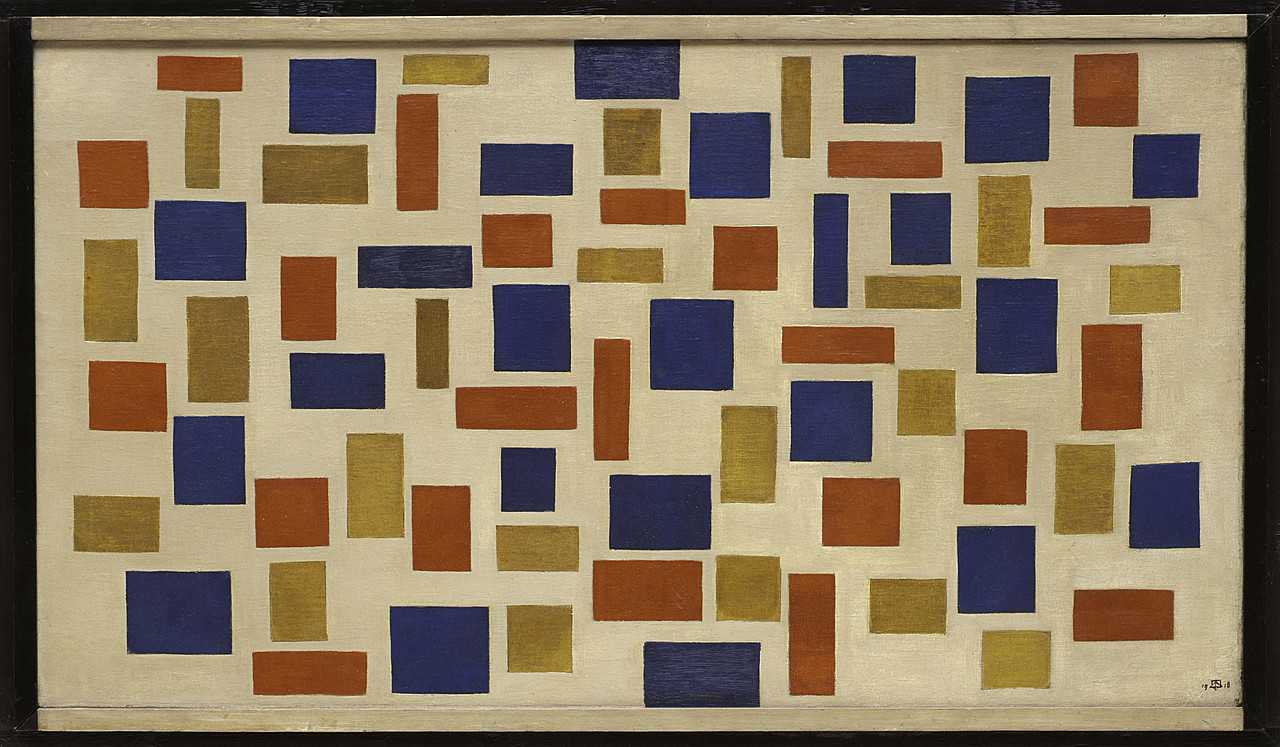
Composition XI, Theo van Doesburg
Theo van Doesburg was a writer, painter, and the main theorist behind the movement.
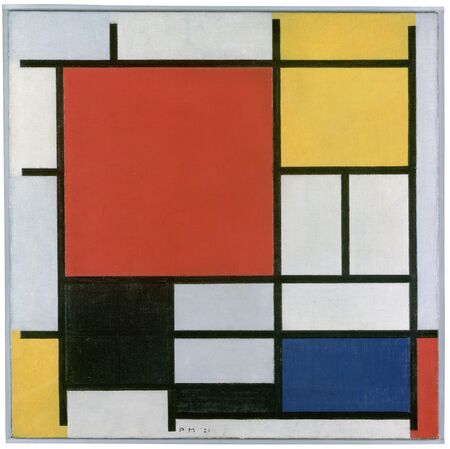
Piet Mondrian, Composition with Large Red Plane, Yellow, Black, Grey and Blue, 1921
Mondrian and Colour, Turner Contemporary
Piet Mondrian is arguably the most famous member of the De Stijl movement, renowned for his primary-color, grid-based paintings.
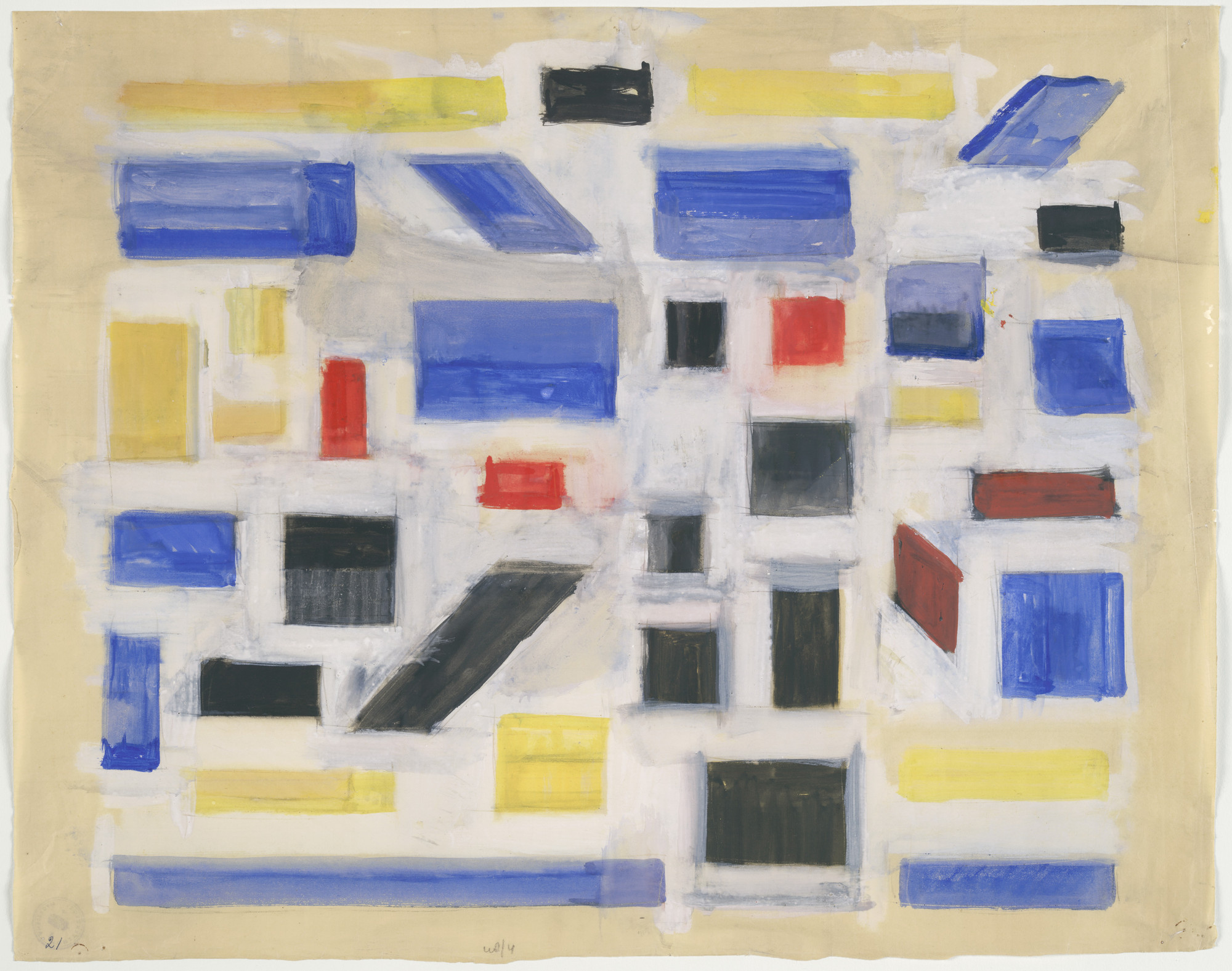
Bart van der Leck, Untitled 1917
Bart van der Leck is a painter and designer.
This is the Rietveld Schröder House, an icon of the Dutch artistic movement De Stijl.
The Rietveld Schröder House and the well-known Red and Blue Chair were designed by architect and furniture designer Gerrit Rietveld.
Vilmos Huszar, Geometri composition (1920)
Vilmos Huszar is a graphic designer and painter.
Core Principles of De Stijl
The pursuit of spiritual harmony and universality through abstract shapes propelled the de Stijl movement. The following fundamental ideas encapsulated the movement's visual language:
1.Abstraction and Simplification
By eschewing representation, artists turned their attention to the fundamentals of form. Designs, sculptures, and paintings were reduced to their most basic components: flat surfaces, rectangular shapes, and vertical and horizontal lines.
2. Primary Colors and Neutrals
Black, white, and gray were the only non-colors and the three primary colors—yellow, blue, and red—were included in the color scheme. It was believed that this language was objective and universal.
3.Use of Straight Lines and Rectilinear Geometry
We stayed away from curves and diagonals. To establish a feeling of balance and order, the compositions made use of rectangular shapes and orthogonal lines.
4. Asymmetrical Balance
Rather than traditional symmetry, De Stijl compositions achieved harmony through balanced asymmetry.
5. Integration of Art and Life
De Stijl extended beyond painting into architecture, furniture, and even graphic design. The goal was to create a total environment in which art, design, and everyday life were unified.
Notable Works and Contributions
Piet Mondrian’s Painting
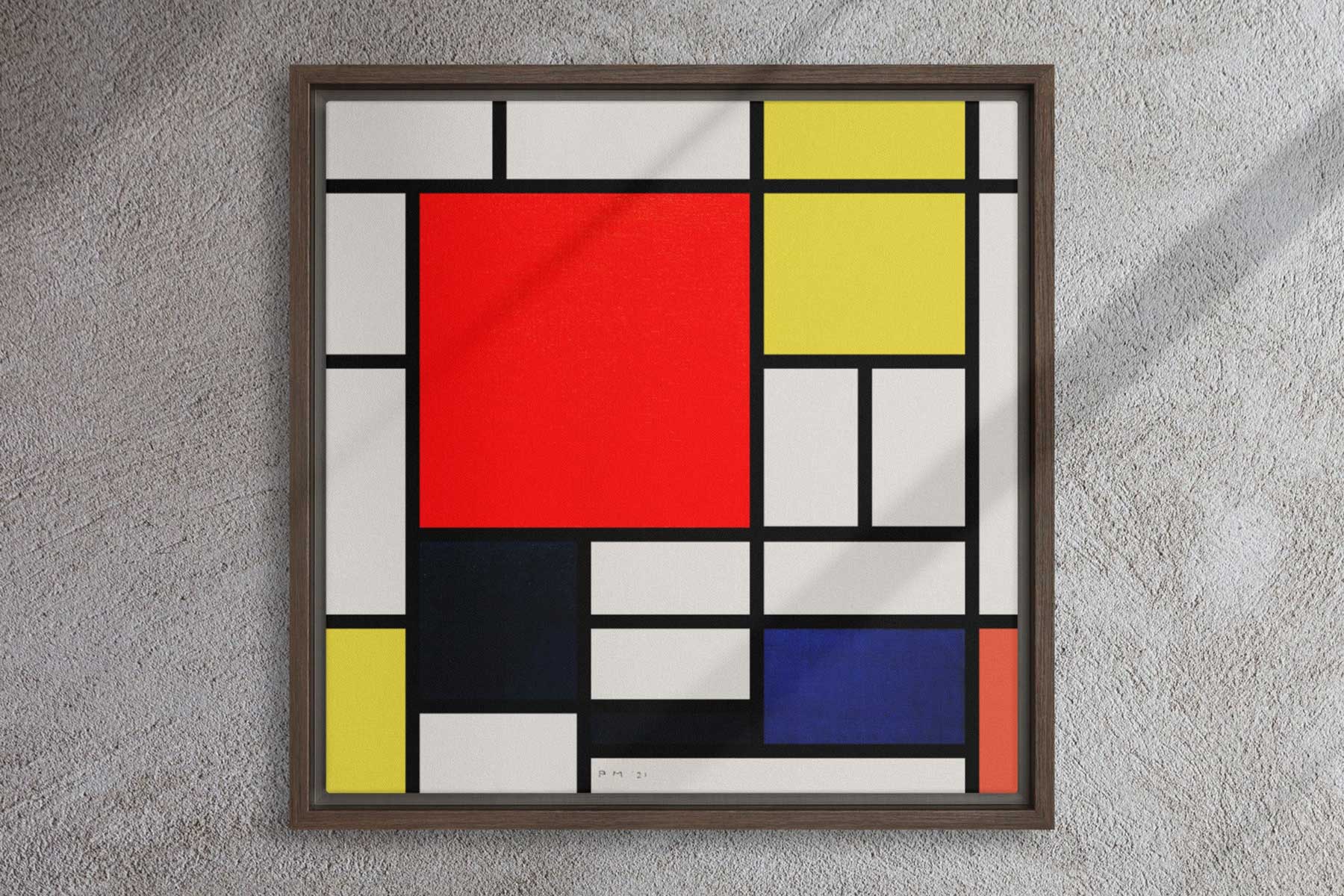
The De Stijl school of thought is best illustrated by Mondrian's transition from realistic landscape paintings to complete abstraction. With their black grids and blocks of primary color, his famous pieces, such Composition with Red, Blue, and Yellow (1930), perfectly capture the aesthetic of the movement.
Gerrit Rietveld’s Red and Blue Chair (1918)

This chair deviated from conventional design by utilizing intersecting surfaces painted in the distinctive De Stijl color scheme, which was an architectural manifestation of the movement.
Rietveld Schroder House (1924)
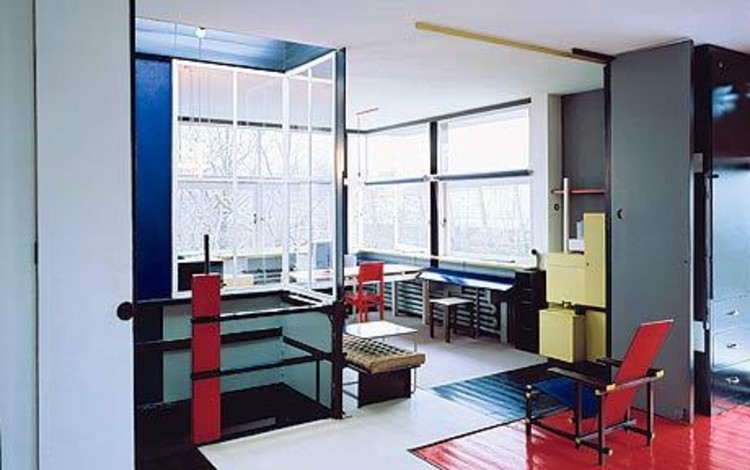
This Utrecht residence, which was designed by Rietveld and his client Truus Schröder-Schräder, is the only structure built completely in accordance with De Stijl ideals. It translates the principles of the movement into three dimensions with its color blocking, open floor designs, and sliding panels.
The Decline and Legacy of De Stijl

The group disbanded by the late 1920s due to internal conflicts, particularly between Mondrian and van Doesburg. A split resulted from Van Doesburg's use of diagonal lines, which ran counter to Mondrian's rigid vertical/horizontal philosophy.
De Stijl as a whole essentially came to an end with Van Doesburg's death in 1931, although its impact persisted.
Lasting Impact
Modernist architecture had an impact on architects like Le Corbusier and Mies van der Rohe, as well as the Bauhaus and International Style.
Minimalist Design: The mid- to late 20th century's minimalist art and design trends were foreshadowed by the purity and practical aesthetics of the De Stijl.
Swiss design, modern branding, and even web design were impacted by the use of geometric abstraction and color harmony in graphic design.
Conclusion
The de Stijl movement was a philosophical quest for order, universality, and clarity rather than just an aesthetic movement. The painters and designers of De Stijl provided a vision based on reason, harmony, and beauty during a period when the world was in the process of rebuilding and redefining itself.
Despite the brief existence of its rigid guidelines and philosophy, the De Stijl movement has left a lasting legacy that continues to influence designers, architects, and artists worldwide, demonstrating that true innovation frequently stems from constraint and simplicity.
Join our classes to enhance & improve your memory skills and let your child unlock the power to retain information from every moment of his/her life!

